There’s so much involved with reloading your own ammo.
But deciding to be your own ammo manufacturer is only the beginning.
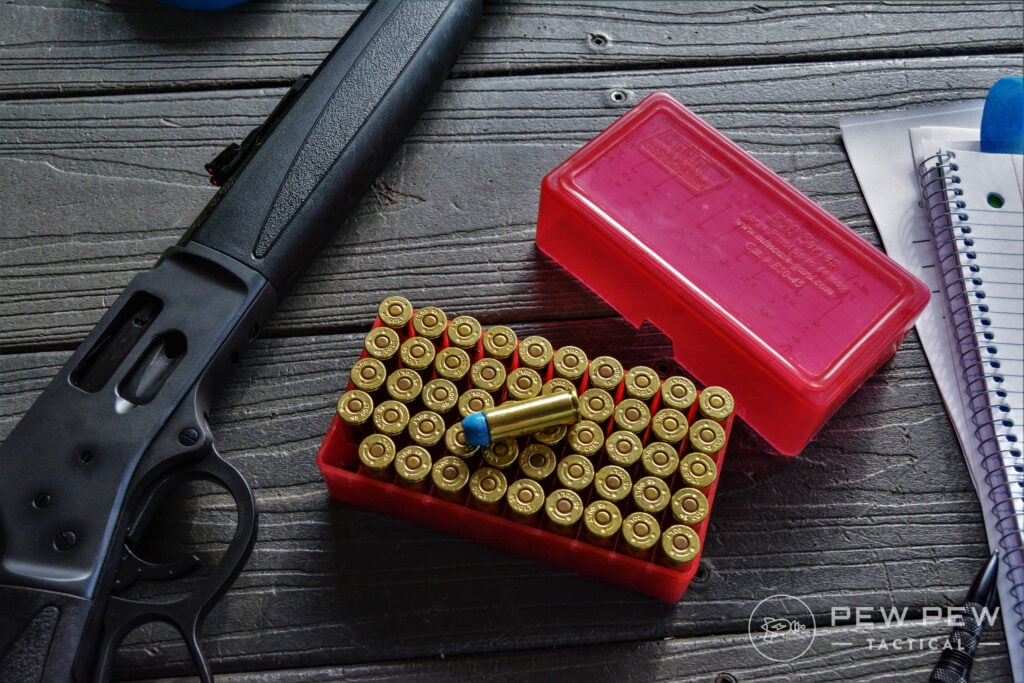
Once you’ve figured out what caliber, you’ll need to buy components and equipment. And one part of that process is deciding on a press.
I’ve spent the last few years pulling the hair out of my already receding scalp, trying to figure out which press to use.
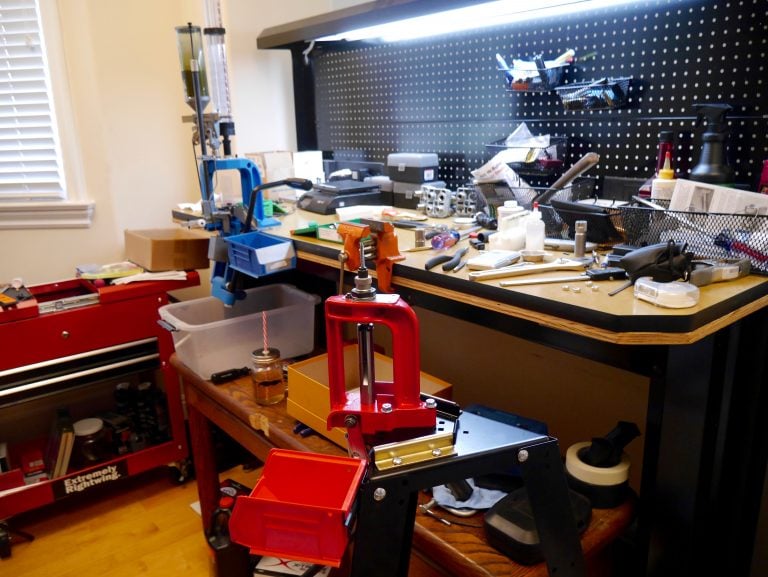
But don’t worry, I’m here to drop my knowledge onto you. I’ll walk through the best presses, the types you can buy, and a basic understanding of how they work.
So, keep reading!
THE QUICK LIST
-
Best Bench Mounted Press
-
Best Turret Press
-
Most Adaptable
Table of Contents
Loading…
Best Reloading Presses for Beginner to Advanced
1. Frankford Arsenal M
Prices accurate at time of writing
Prices accurate at time of writing
-
25% off all OAKLEY products - OAKLEY25
Copied! Visit Merchant
Pros
- Removable die blocks
- LED lighting
Cons
- Universal shell holder is a weak point
The Frankford Arsenal M removes a lot of the guesswork and accessories from the equation.
The removable die blocks mean that the dies only need to be set once and are incredibly easy to swap out.
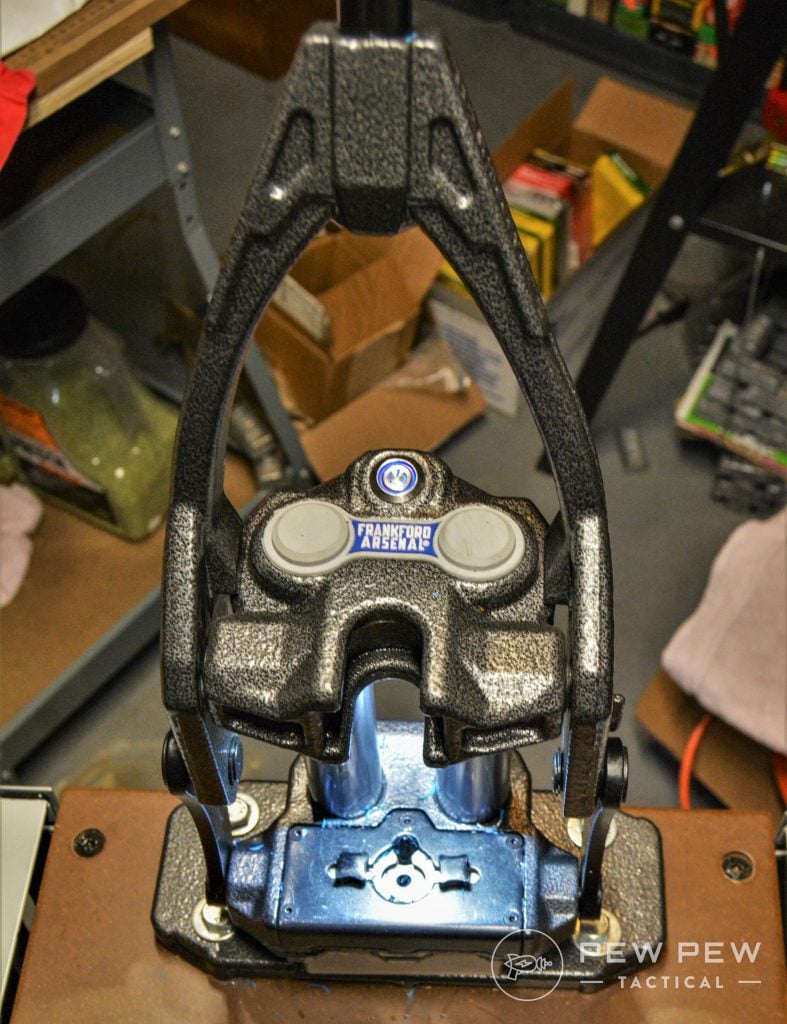
Each case is set into place with a proprietary universal shell holder and does not require an individualized piece. That means it will work for a wide array of case diameters as well as rimmed and rimless cases.
From 9mm to 45/70, this press can handle it.
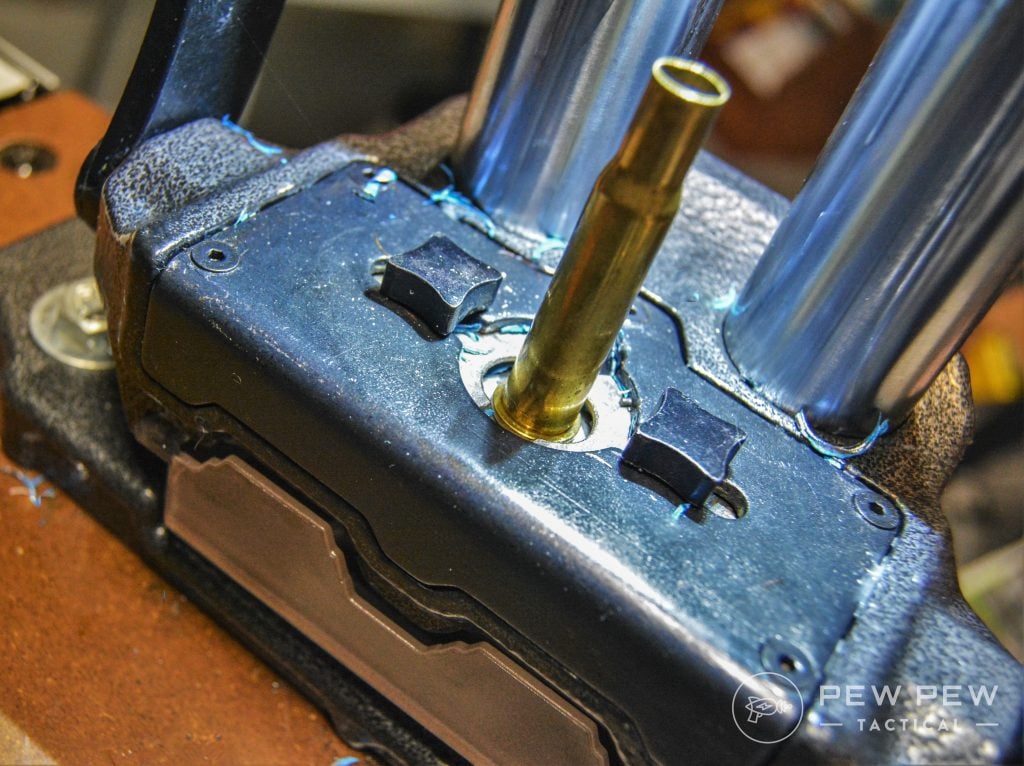
Frankford has its own bushing system that is fairly cost-effective and easy to adjust. Mixed with the integrated LED system, you can watch every movement with ease.
In terms of cost, the M-Press is more expensive compared to some options from other manufacturers but is still priced at a reasonable $189.
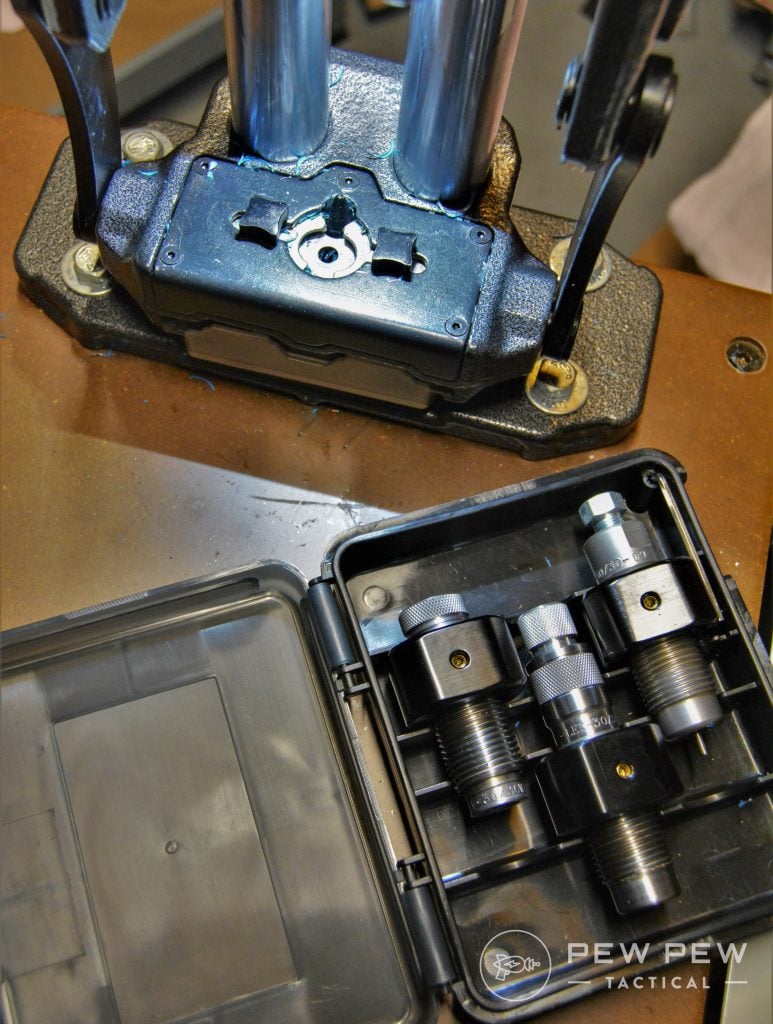
The universal shell holder is also a weak spot as it’s only held in with four very small machine screws. This is one of the few failing points if the case is improperly lubed before sizing.
2. Lee Precision Classic Turret Press
Prices accurate at time of writing
Prices accurate at time of writing
-
25% off all OAKLEY products - OAKLEY25
Copied! Visit Merchant
Pros
- Faster than a single-stage press
- Easy to actuate
Cons
- Lots of moving parts reduces durability
- Hard to mount a powder drop
The Lee Precision Classic Turret Press is a unique turret-style option.
The actual die holder – tool head – rotates with the pull of the handle. In traditional styles, like the Lyman T-Mag II (my second favorite), the tool head must be rotated manually.
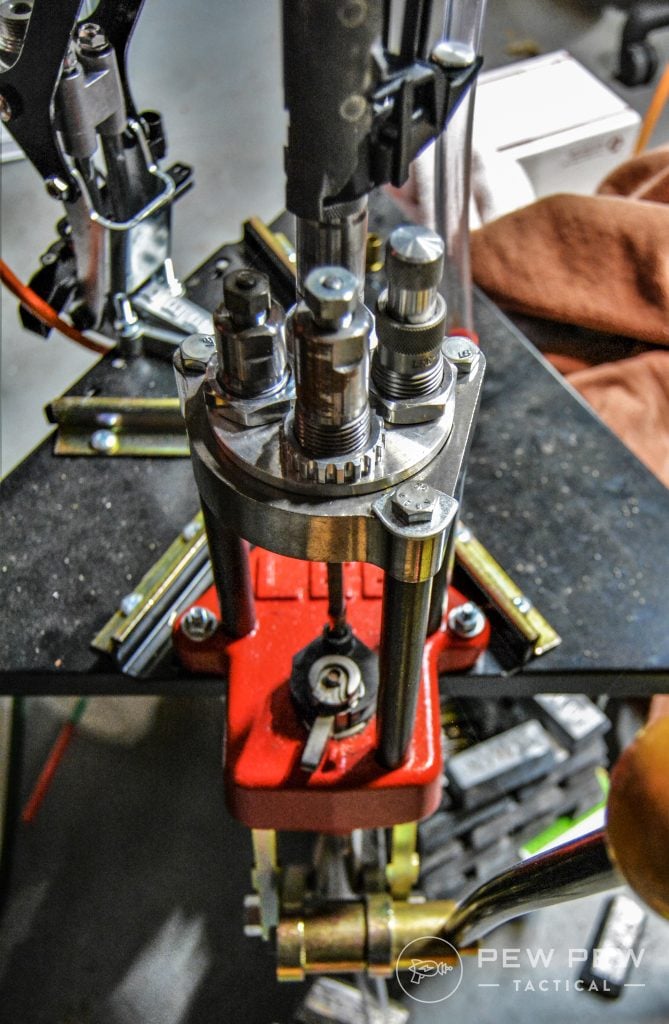
It’s easy to move too quickly on a turret press and overlook a step. While this is faster than a single-stage, it’s not THAT much faster.
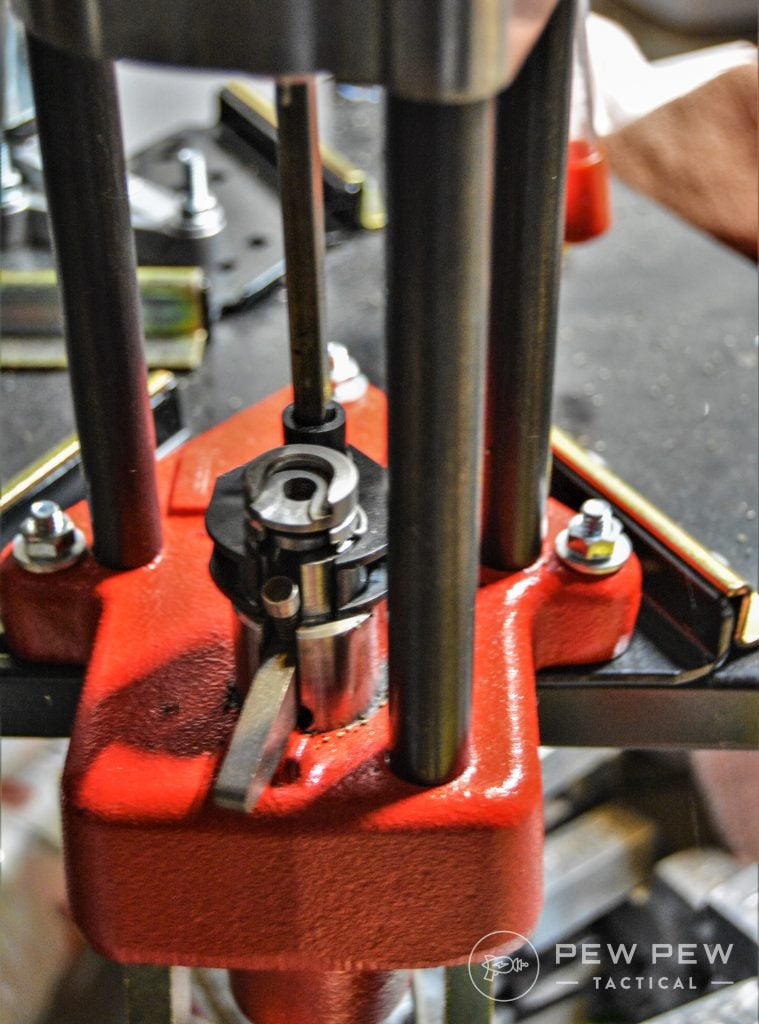
Turrets are also prone to breaking at the center post. Lee doesn’t have that problem since there isn’t a center post, but it is made of aluminum, which is much weaker than cast materials.
The Lee also has more moving parts, which means higher failure rates and more maintenance.
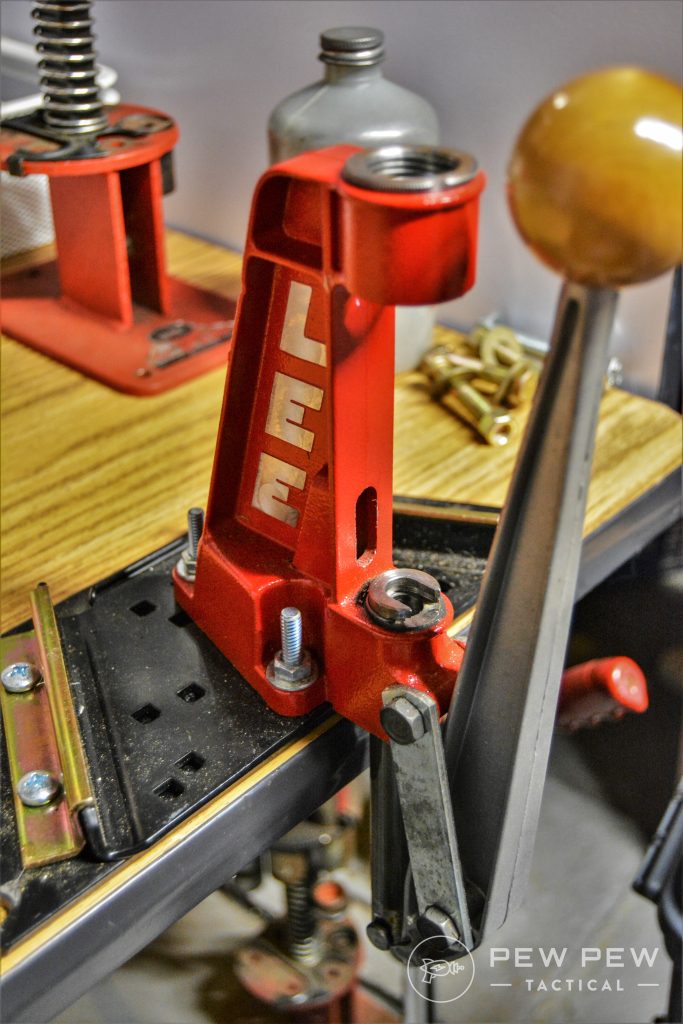
On top of all that, it’s difficult but not impossible to mount a powder drop.
3. Dillon Precision RL550
Prices accurate at time of writing
Prices accurate at time of writing
-
25% off all OAKLEY products - OAKLEY25
Copied! Visit Merchant
Pros
- Oustanding build quality
- Quick change toolheads
Cons
- Expensive
- Shell holder isn't auto-indexing
A favorite press of many reloaders, the 550 doesn’t have as many bells and whistles as the newer XL750 or RL1100 but still has everything a progressive press requires.
It will solve all pistol and rifle reloading needs.
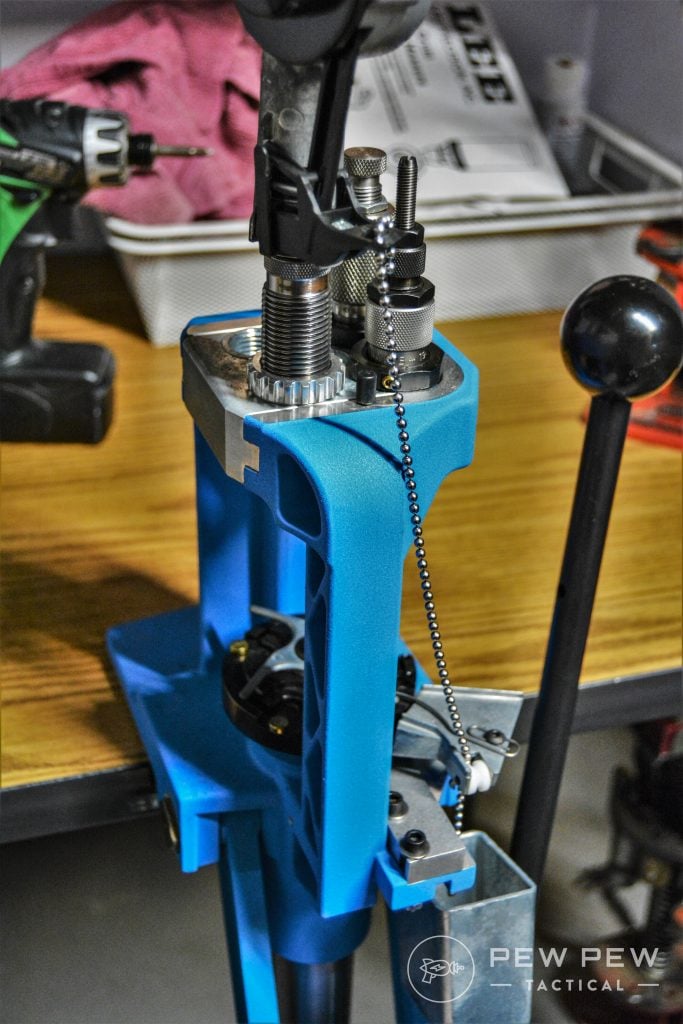
One controversial benefit is the ability to use other manufacturers’ tools like powder drops, die sets, and even bullet feeders. There are tons of aftermarket parts on the market made specifically to adapt to the competition’s lower-priced solutions.
This is a great introductory press from a company that has outstanding build quality and a great warranty.
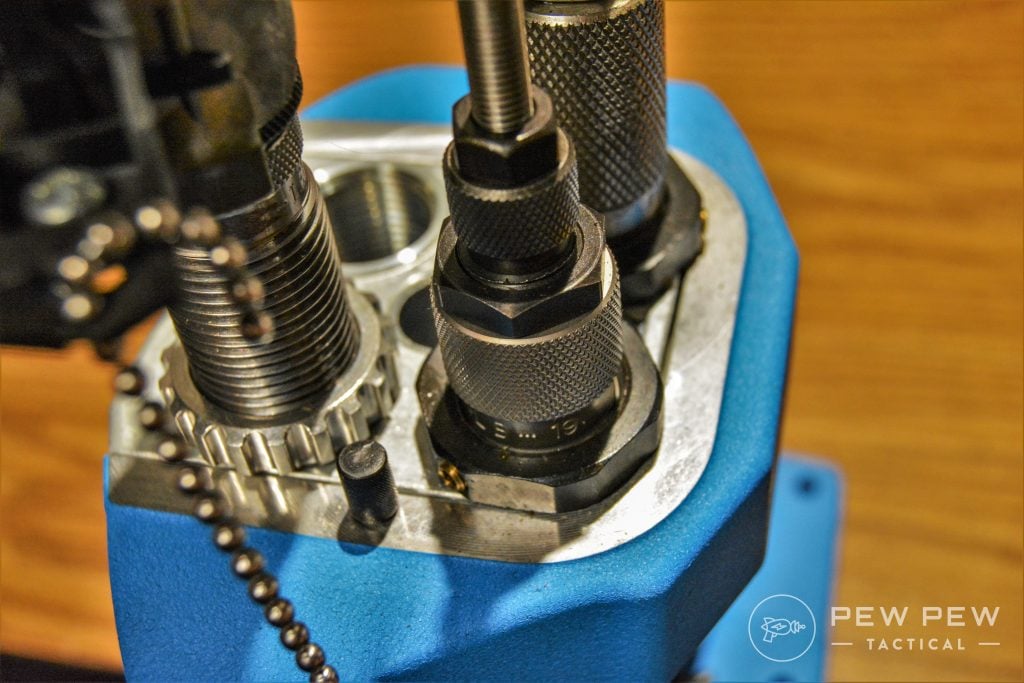
In addition, it is possible to use this as a single-stage or even run one case through start-to-finish like a turret press.
Quick change tool heads also make it relatively easy to swap out for a different caliber.
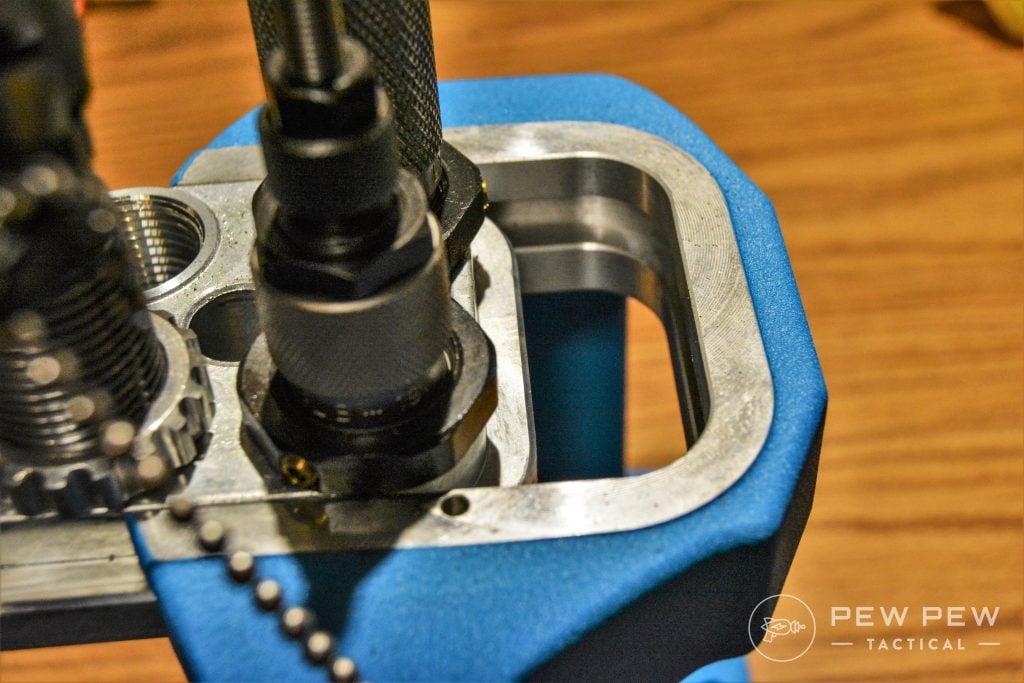
Downsides? Well, the RL550 also does not have an auto-indexing shell holder, but that isn’t that big of a deal.
If you’re looking for all the bells and whistles, the XL750 or RL1100 might be a better option. But for a ‘do it all’ progressive press, the 550 more than meets the requirements without needing electricity.
4. Lee APP Press
Prices accurate at time of writing
Prices accurate at time of writing
-
25% off all OAKLEY products - OAKLEY25
Copied! Visit Merchant
Pros
- Extremely affordable
- Great for multiple tasks
Cons
- Build quality isn't the best
The Lee Automatic Progressive Press is a new and innovative press.
It’s made for a variety of tasks and not just for reloading. The entire system can be adapted for sizing cast bullets, case prep, or single-stage reloading.
It is highly limited because it can really only handle cases up to .223/5.56. So, only pistol ammunition is for the single-stage process.
5. Lee Ideal Tool – Best for Survivalists
While not a winner on our overall list for its limitations, if you can find one in your preferred caliber, the Ideal Tool is a great option.
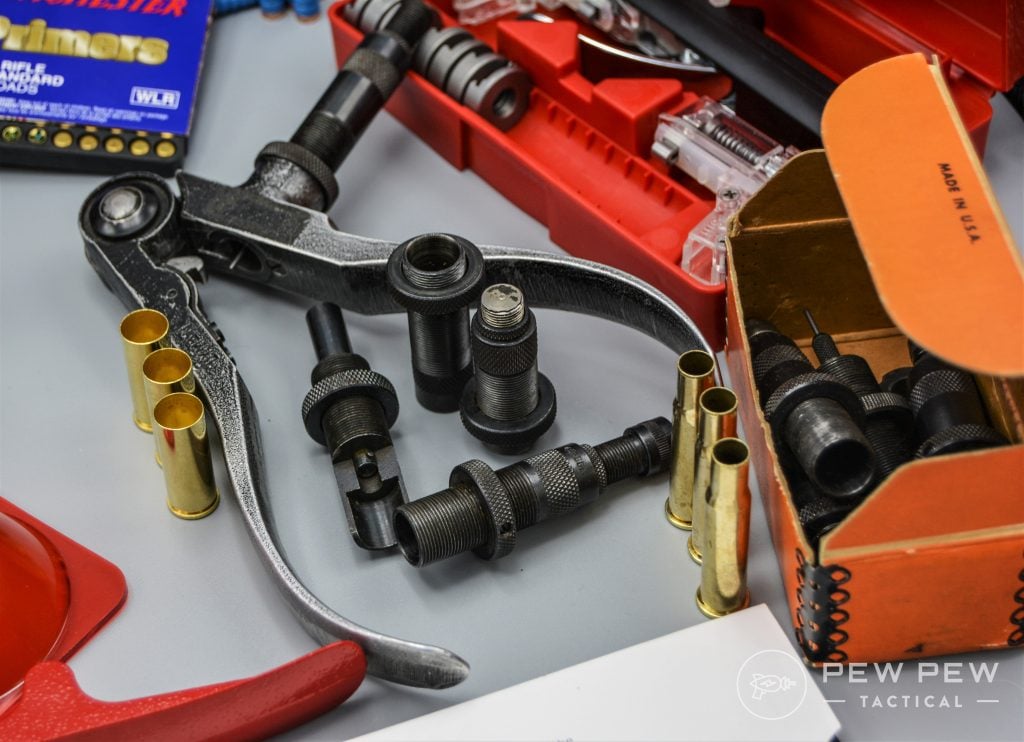
Lightweight and in a small package, the ideal tools can easily reload cases with minimal effort.
Throwing it into a bugout kit will add some weight, but not as much as any other press option.
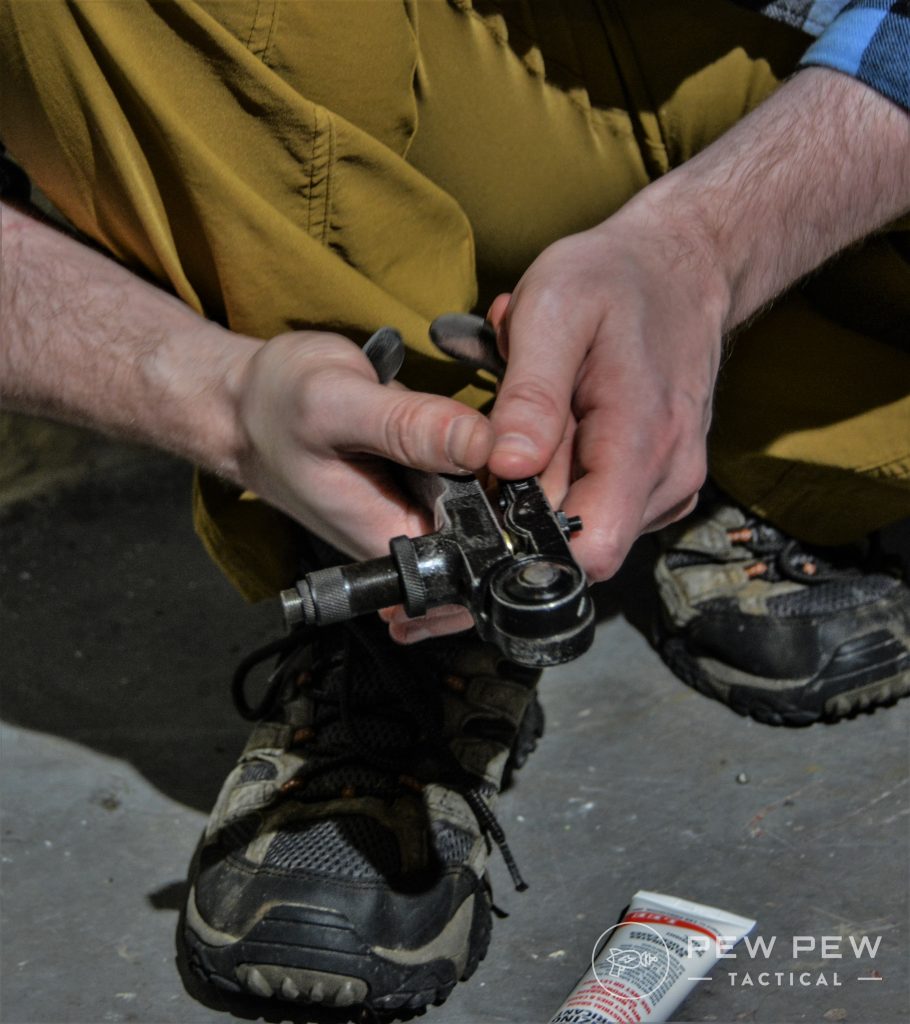
In addition, it doesn’t require any extra tools as a Lee Loader does. Paired with a bullet mold, a user could even cast and load their own ammunition in the field.
Types of Presses
Now that we’ve laid out our favorites, let’s dive deeper into the types of presses and their pros/cons.
Single Stage Press: Bench Mounted, Handheld & Specialty
| BENEFITS | DISADVANTAGES |
| Inexpensive | Slow |
| Lightweight | Requires A Lot of Die Changes |
| Smaller | Difficult to Set-Up |
| More Precise | More Loose Pieces |
| Focuses on Every Step Individually | Requires Constant Case Insertion and Removal |
One cartridge at a time with one die.
Like the heading says, this press only has one particular stage. There are a bunch of different variations of this press, and it appears to be the first type that was ever mass-produced.
That last part is purely speculation, but it would make sense. There is often a progression (See what I did there?) of design alterations and advancement.
These fall into three categories — specialty, hand-held, and bench-mounted. Each has a benefit, but they all have some significant drawbacks as well.
Bench Mounted: The easiest press to use. This bolts to the bench and can handle nearly all cases from .22 Hornet all the way to .50 BMG. They can be made from aluminum, steel, or cast iron. The most common is cast iron, but others are gaining in popularity.
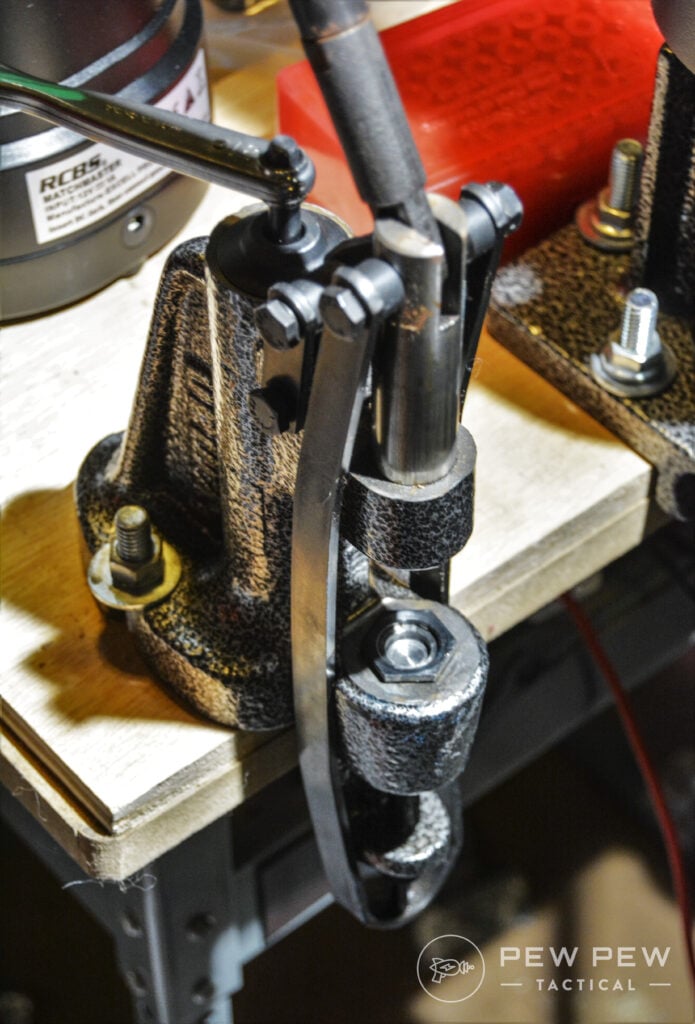
Handheld Presses: These are some of the oldest styles. Some are still used, called the Lyman 310 Tool. It’s a nutcracker-style press.
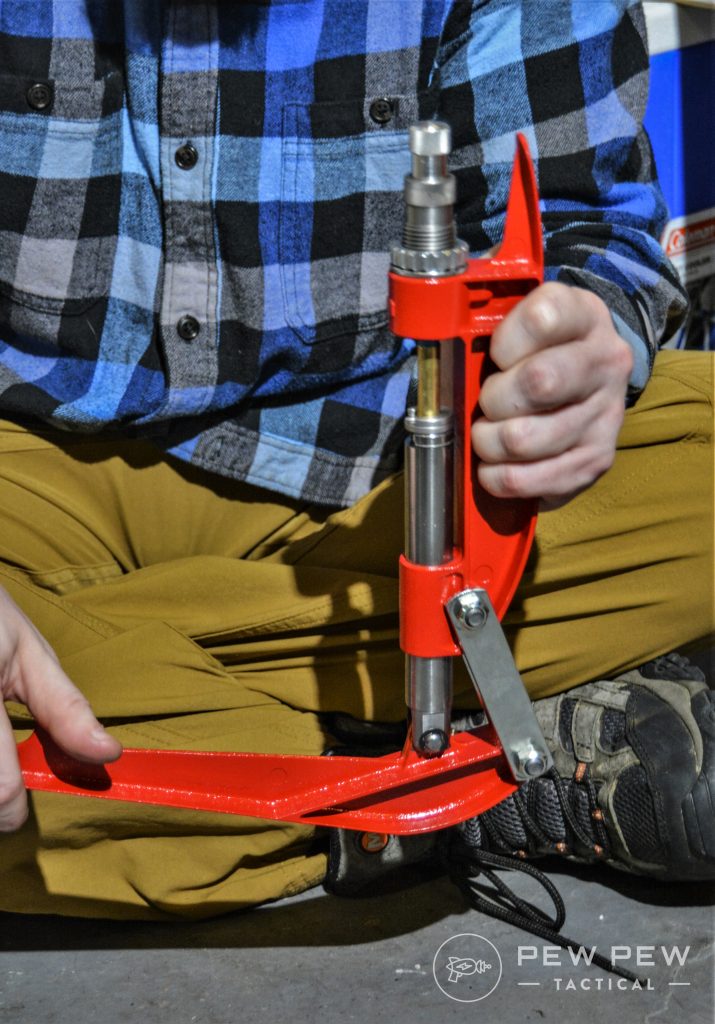
Specialty Presses: Fall more in line with a Lee Loader or something similar. They take extra tools but can be packed incredibly small. Not great for precision rounds but adequate.
Where all these systems are the “same-same but different” is only having one location to attach a tooling die.

Once one die is used and no longer needed, it must be removed from the tool and replaced by the next “stage.” It’s a pain, but some companies like Lee, RCBS, and Hornady have proprietary bushing systems to make this easier.
Personally, I hate single-stage presses. I use them primarily to build a load for a particular rifle.
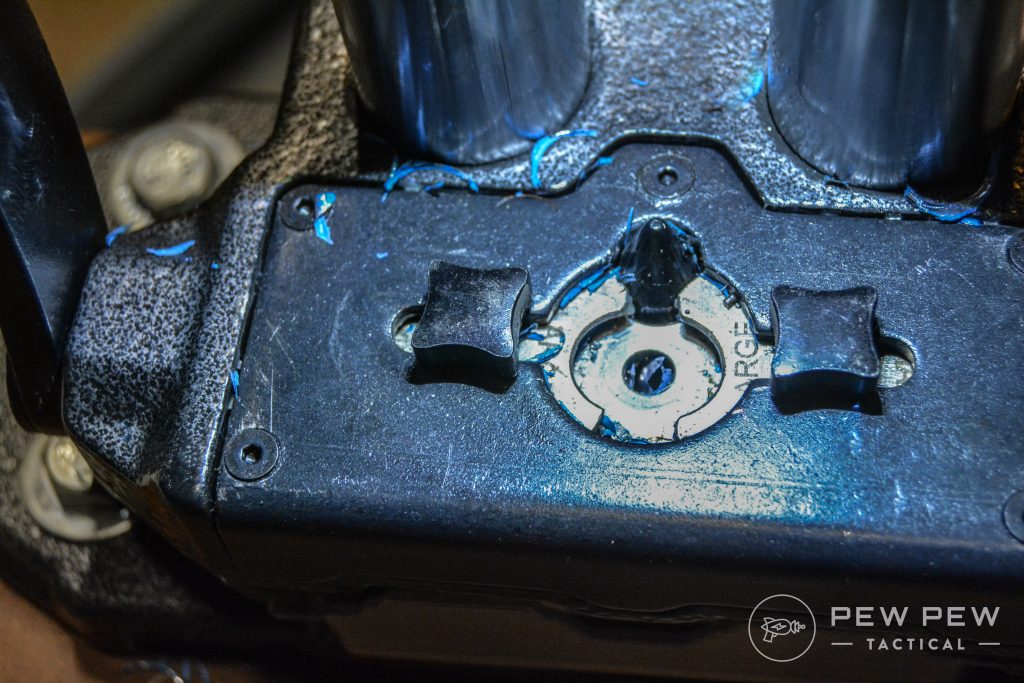
I can scale a cartridge with a preferred projectile and powder to a very specific charge, bullet weight, bullet seat depth (OAL), primer type, or even crimp style.
Once I know what works best with my firearm, I set it up on a different press.
Turret Press
| BENEFITS | DISADVANTAGES |
| Tooling Stays Set and In Place | Can Not Use Tooling in Other Presses |
| Replaceable Turrets | Manufacturer Specific Hardware |
| Start-to-Finish Reloading | Limited Die Placement |
| Multiple Stages Available at Once | Hard to Change Calibers or Add/Remove Stages |
| Drop Powder on Press | Difficult to Adjust |
One cartridge at a time with multiple dies.
A big step up from the single-stage is a turret press. These contain a literal turret (round tower) with multiple holes for stage tooling.
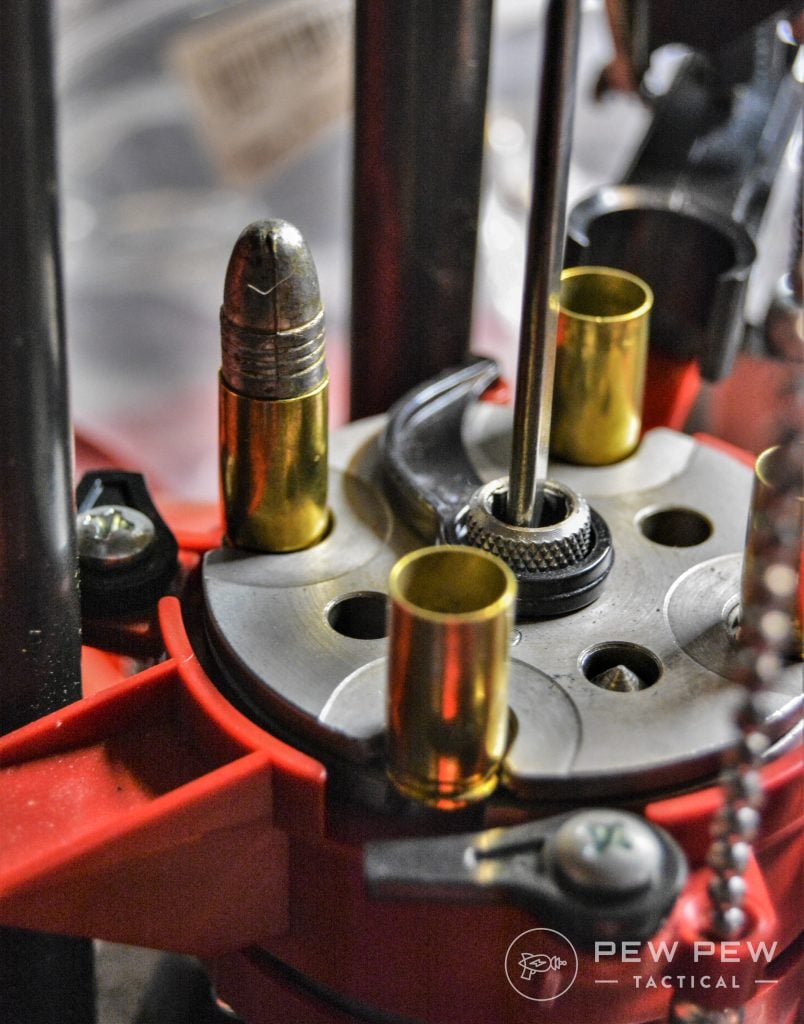
This turret will move and shift manually. Most current production variations also sport the ability to remove and attach different tool heads without taking the tooling out.
The main difference between a single-stage and a turret – other than the obvious turret – is the ability to reload a single case from start to finish without removing the case from the press.
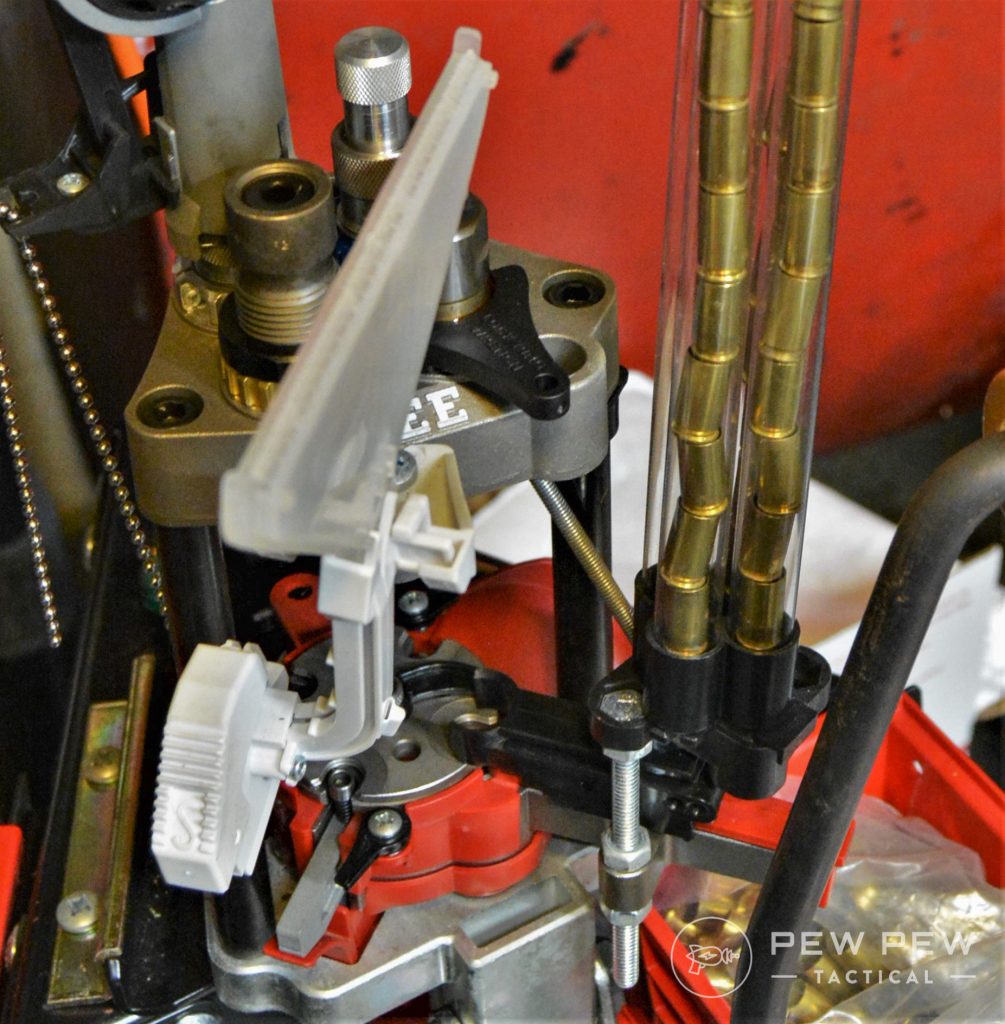
Many companies offer their turret presses with a specific placement for a powder drop.
Take the Lyman T-II, for example. It has an odd number of die placements. One of these is often used for a powder drop.
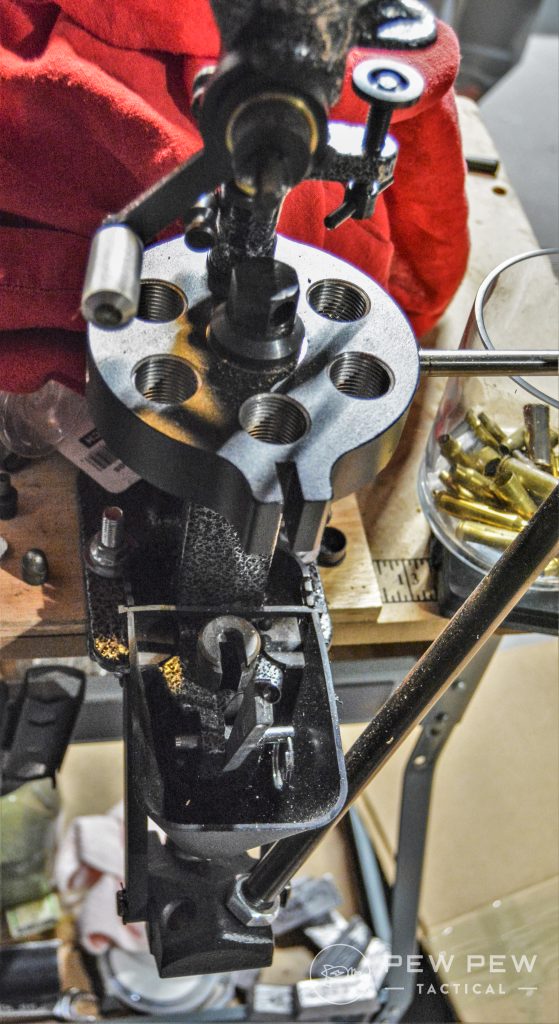
While the powder drop needs to be adjusted every single time you change calibers, a user can still have multiple caliber dies in a single turret.
Turrets are great. Once they are set up and ready to go, it is vastly faster than a single stage.
You can still get highly accurate ammunition and can use different powder funnel systems, which will allow greater versatility and accuracy of powder loads.
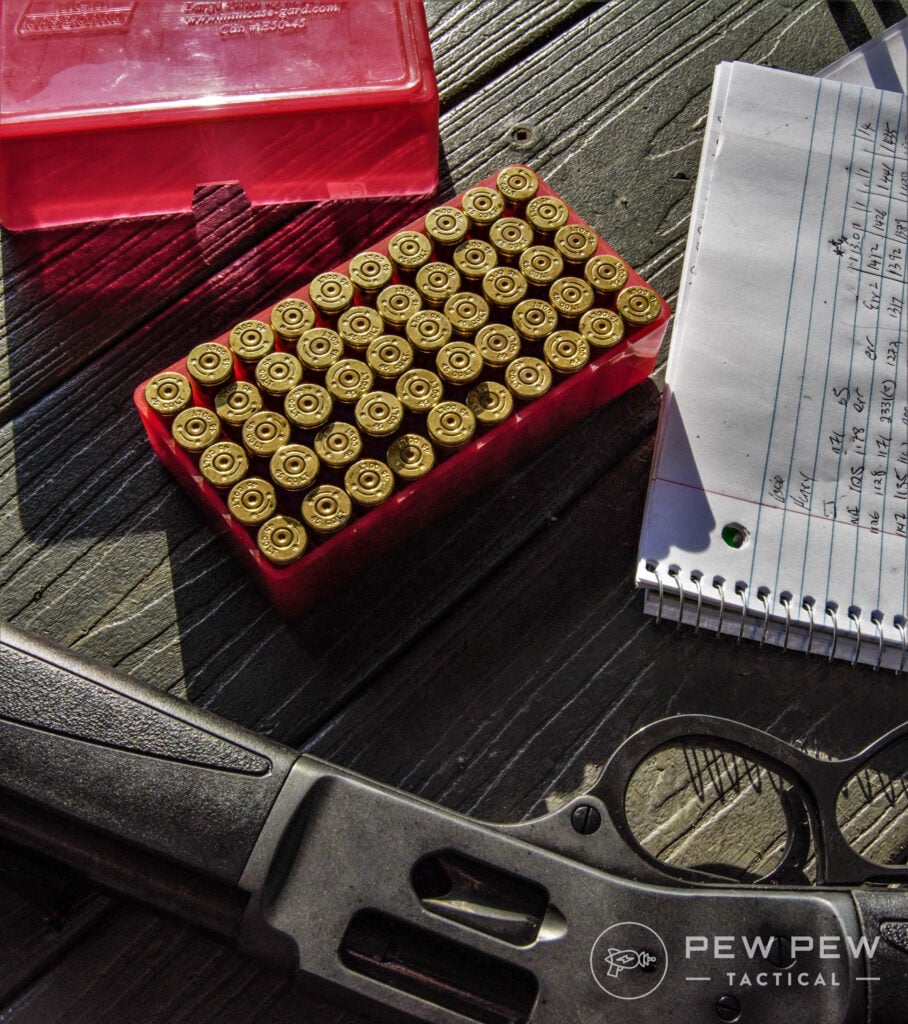
Progressive Press: Manual Indexing, Automatic Indexing & Machine Run
| BENEFITS | DISADVANTAGES |
| Very Fast Process | More Chances for Errors |
| Can Add or Remove Stages | Difficult to Set Up |
| Easy to Mount a Powder Drop | Require Pour Through Die or Powder Drop |
| Can Still Change Cartridges | Difficult to Swap Base Plate |
| Upgradable | Expensive and Upgrade Costs |
Multiple cartridges at a time with multiple dies.
Buckle up, Buttercup, because this is going to be a lengthy segment. Progressive presses offer a variety of different styles. Let’s start with the most common to least common.
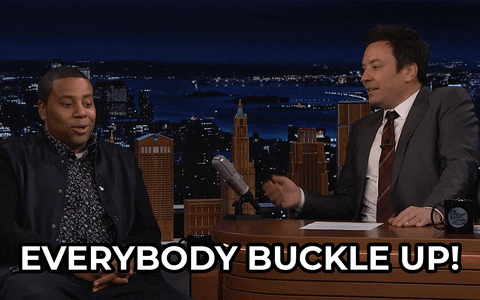
The thing all progressive presses have in common is that they will do multiple stages at the exact same time.
You may have a 4-position (four tooling dies available) that will have a cartridge used in each of the dies at exactly the same time.
This is great because it increases output significantly from all other progressive types. It also increases errors.
The bottom portion of all Progressive Presses – aka baseplate – has corresponding cartridge placements for the dies.
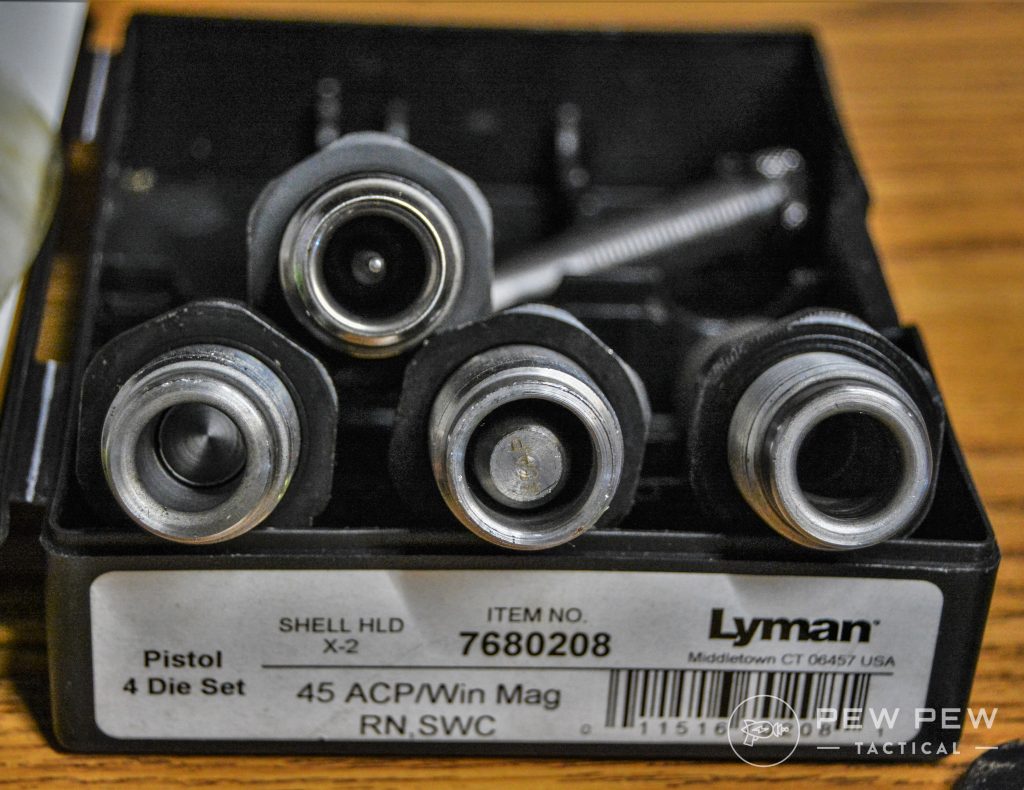
Hole #1 can still be stage 1. Hole #2 can house the dies for stage 2. It continues until there are no more dies or places to put dies.
The entire baseplate, including the multiple cartridges, is raised at exactly the same time, and each cartridge is inserted into a different die in unison.
Once the cartridge makes its way through all the dies, it gets spit out of the press and ready for loading.
Manual Indexing Progressive Press: The Beginner’s Progressive…Much in the same way a turret press is manually manipulated, the baseplate of these presses is manually moved. I like these the most, even if it does slow me down a little bit. It gives me the luxury to examine the cartridges before moving to the next stage or reinserting if there is an issue.
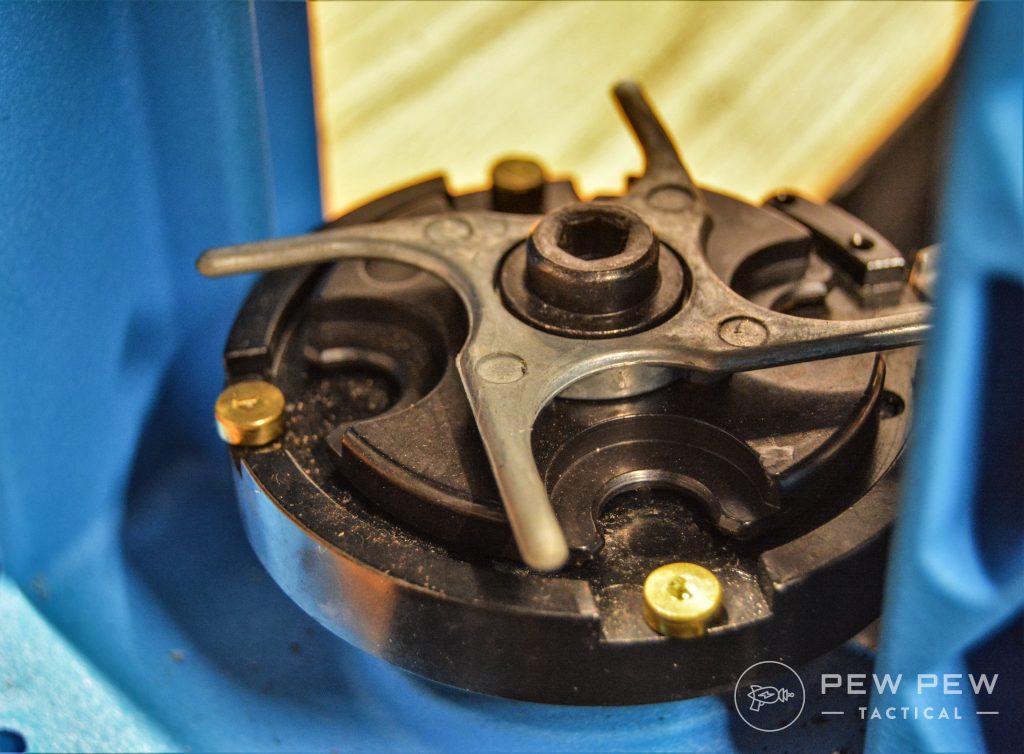
Auto-Indexing Progressive Press: This manually indexes the base plate – meaning it moves it to the next position. These are great presses but can get incredibly expensive compared to all other progressive types. One major issue with this type of press is the inability to reset or prevent the indexing from occurring.
Motor-Operated Progressive Press: You guessed it, a motor does the entire indexing process. These presses are not what I would call affordable. They are usually designed for the ammunition manufacturer or high-end/high production reloader.
In order to properly use any progressive press, a user must be familiar with all the stages of reloading – knowing what to look for and what to avoid. And for that reason, I don’t recommend it for new reloaders.
The chances for errors increase exponentially, and so do the chances of blowing off fingers.
Basic Overview of Press Operation
The whole entire point of a press is to reload ammunition.
Any press, regardless of the type of function, will take all ammunition components and restore them to factory standards.
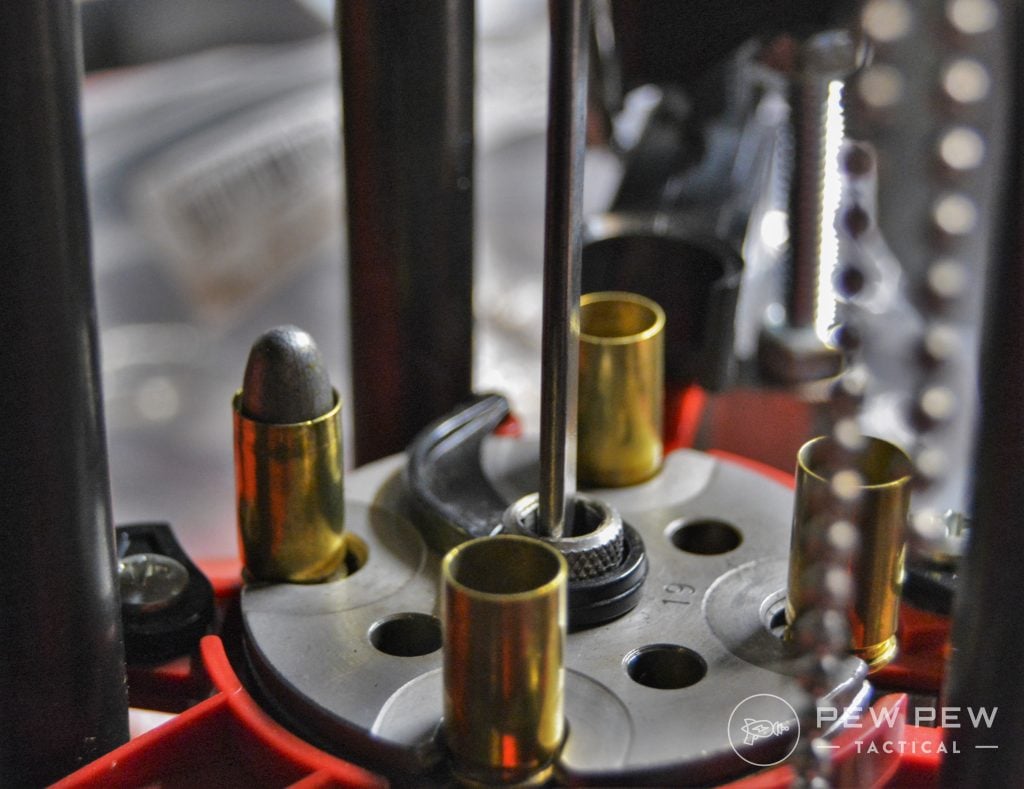
They remove the useless pieces and install new replacement components to assemble a functional piece of ammunition.
All steps fall into categories of “stages” and can be broken out or extended between the stages with additional tooling.
Unless you’re going to be shooting 2 kilometers, you’ll be good with standard reloading presses and stages.
First Stage: Resize Fired Brass and Remove Old Primer
Often, this stage is focused on because people are trying to take as much brass from the range as they possibly can to make cheaper ammunition.
Any case fired from one gun should be ‘full-length’ sized.
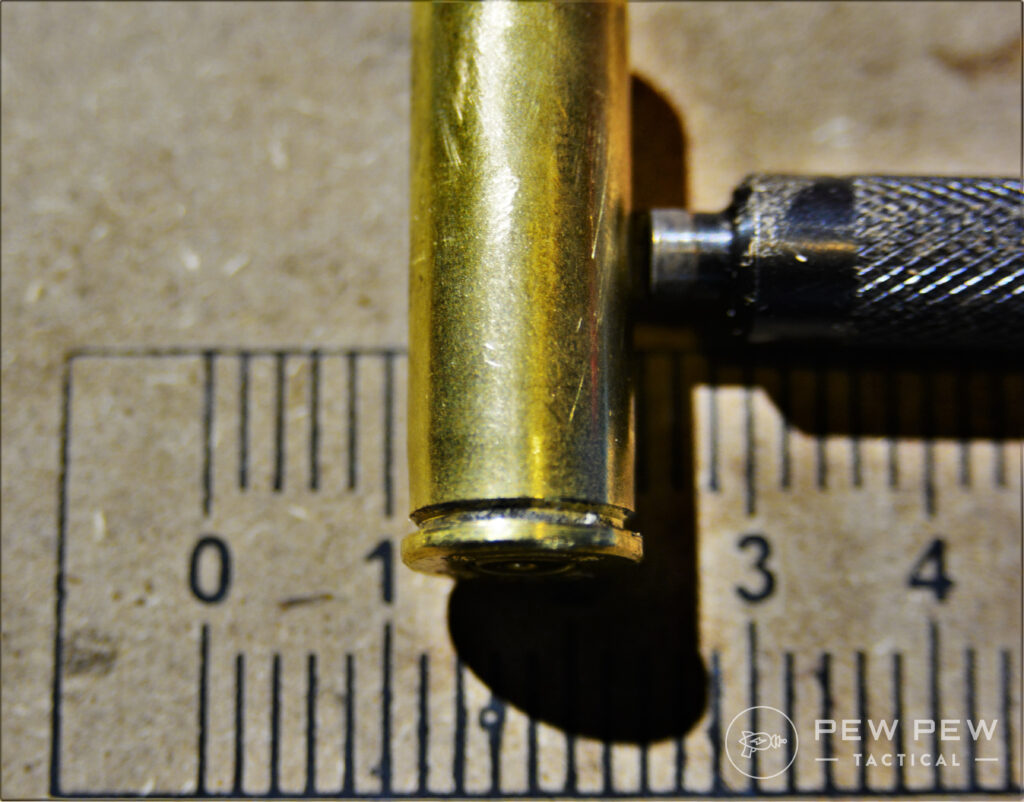
The first stage customarily achieves this with properly lubricated brass. If it’s not lubricated and going in dry, it’s going to be painful.
Once the sizing and primer removal is completed, most presses will seat a new primer.
Second Stage: Expand Case Mouth and Drop Powder
In some instances, the new primer may be added in this stage instead of the second stage. This is the stage when the best explosions happen.
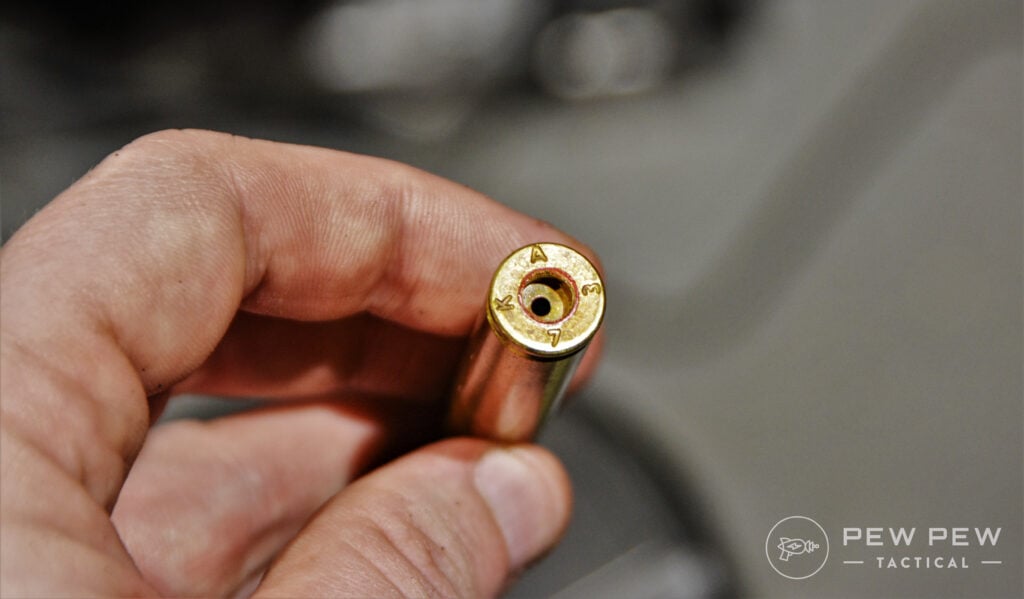
Third Stage: Bullet Seating and Roll Crimping
Here the bullet goes into the case and is pushed down to the correct depth.
The tool that pushes the bullet down will also put some kind of roll crimp (or create tension against the neck of the brass and the actual projectile) to help keep it in place.
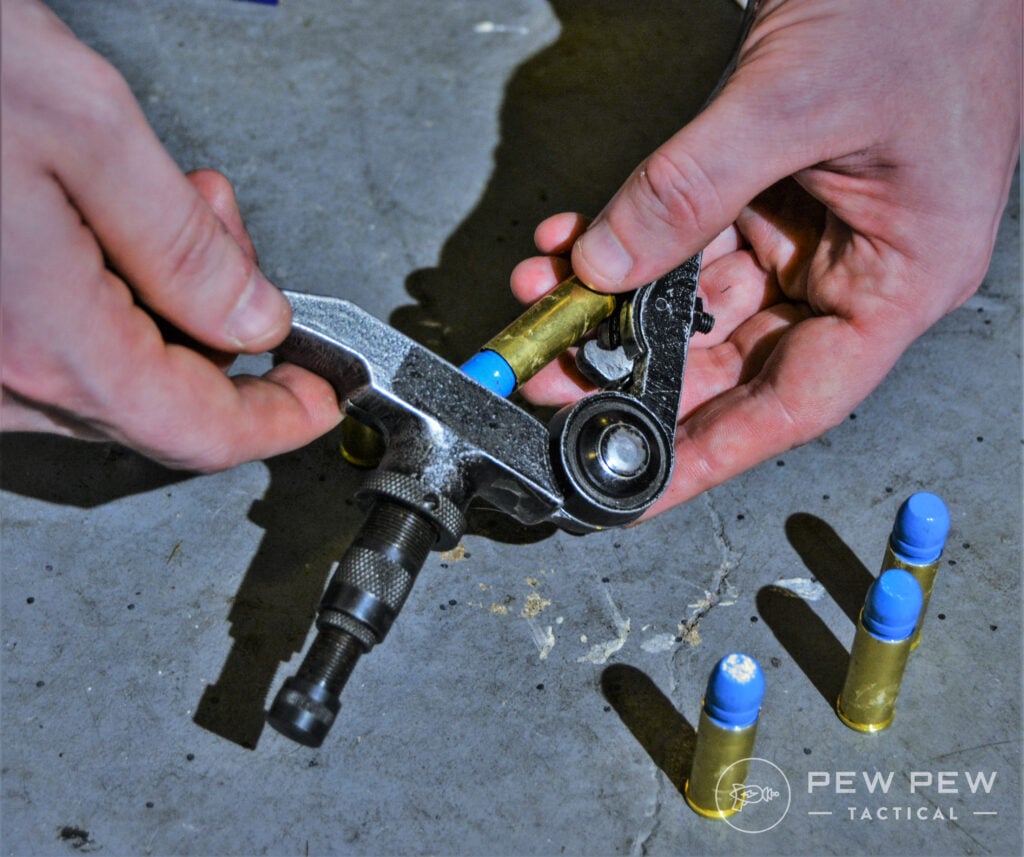
Fourth Stage: Factory Crimp
Adding more or extensive types of crimps can be done in this stage. Sometimes, a basic roll crimp is insufficient, OR the tooling doesn’t offer a roll crimp.
The tooling necessary for these stages is going to be a die set.
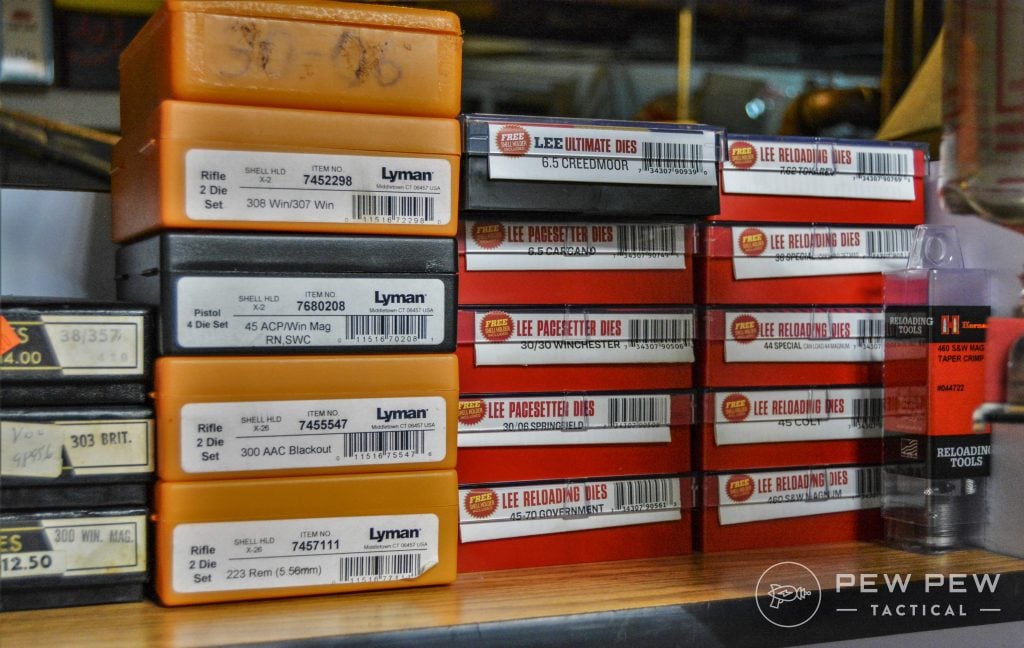
They most commonly come in 2, 3, and 4-die sets. There are die sets that can be in excess of 7 dies – talk about overcompensating – that all do a singular task.
These larger sets will most commonly be used for high-end reloading.
Final Thoughts
While all presses are slightly different, if you practice and use it often, you’ll not only find out what works best for you but also what press can handle your production rate.
For some people, this may be minimizing the amount of movement that happens and focusing on one stage at a time. For others, it might be making consistent loads with minor variation but in high volume.
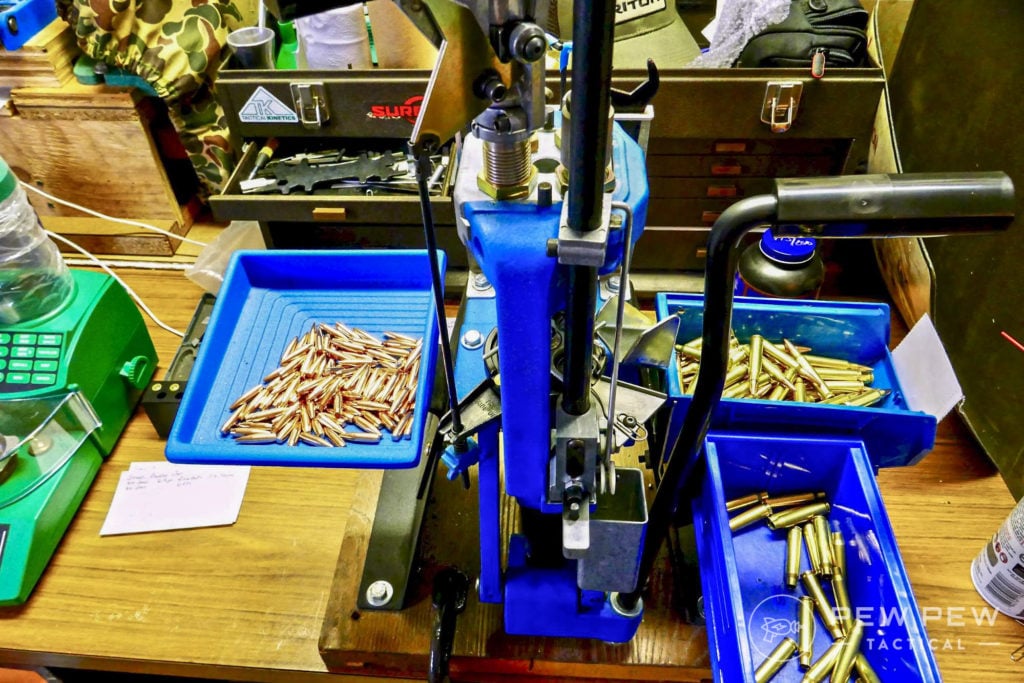
Regardless of the press, knowing the process from start to finish is mandatory for efficiency and safety.
What’s your favorite press? Let us know in the comments below. For a walk-through on how to reload ammo check out our Ammo Reloading Guide!

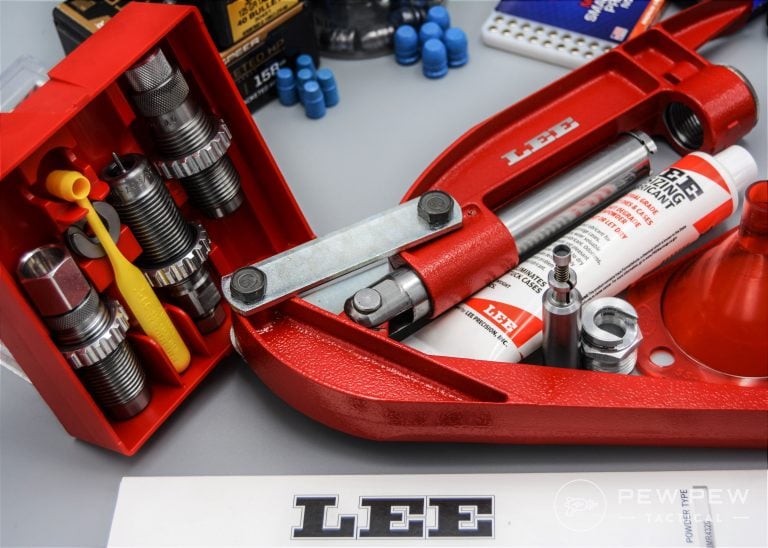

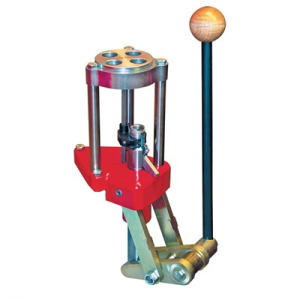
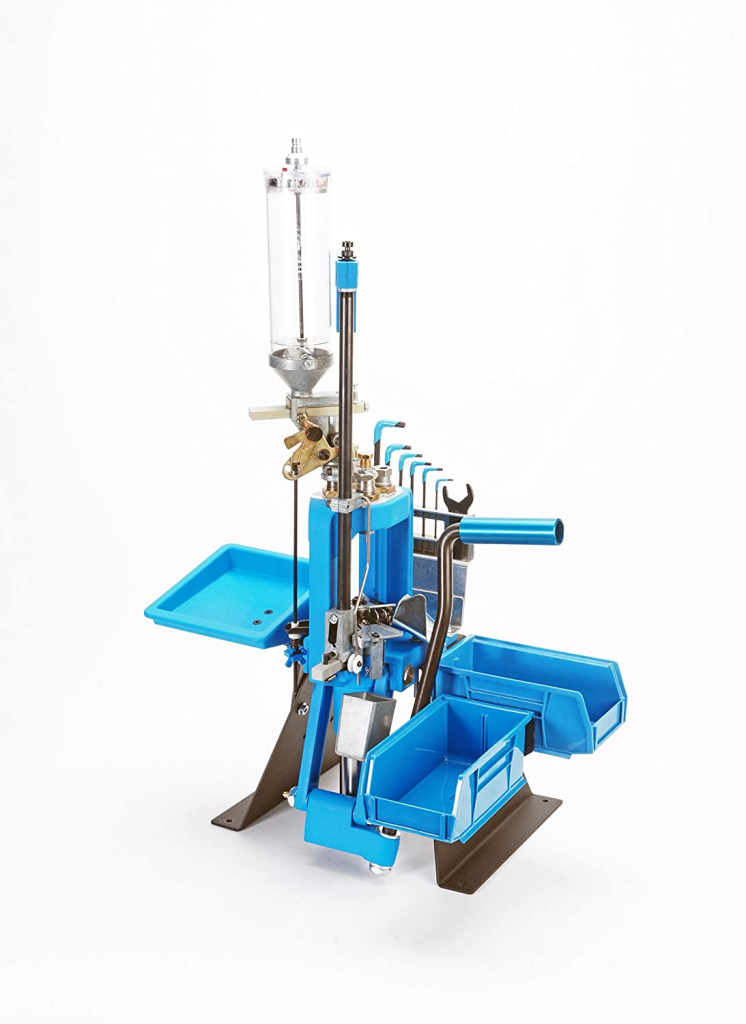
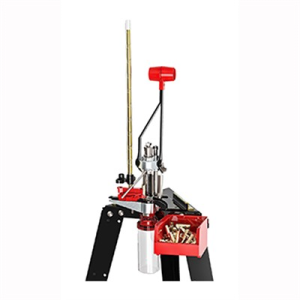
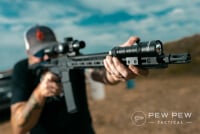






55 Leave a Reply
"In some instances, the new primer may be added in this stage instead of the second stage. This is the stage when the best explosions happen."
I got a good chuckle when I read this line.
RCBS quality reloading components are missing. My rock chucker for precision loads. Last time I’m using your data
Why was RCBS ostracized from the article? I started reloading 60 years ago on an RCBS press and am still using that press today. I've had to replace the decapper a couple of times but it is my old standby. I an electronic scale- and after looking at several, chose RCBS. I also have a Dillon progressive and a Lyman, but when it comes to making ladder loads for precision work it's the old RCBS.
I also almost exclusively use RCBS dies. I have tried other brands but see no improvement.
Hey there, we're not ostracizing anyone. These are just the models our author had hands-on time with. If RCBS works for you, that's awesome! And maybe in the future, we'll get our hands on one to test and add to this article. Thanks for reading!
Lee has a new value turret press out and it works well for 9mm at least. Turret speed for the price of a single stage. Hard to beat if you'd rather spend your money on components than status symbols.
Nice comparison, but should rather keep progressive presses together and single stage presses together. Also, the Frankfort give a lot of QC problems, so not sure it is number 1.
Cost per round: Lee Classic. Cast iron. 10000 rounds and no maintenance, no FTF. FTF. Can be use as a single stage press, do it all the time. Flexibility, cost, and maintenance -- it excells. Can't go wrong with the Lee guarantee of complete satisfaction.
Really!? You picked a Lee progressive over a Hornady progressive? I like the Dillon 650. My buddy has one. Not user friendly to Lefties IMHO. Love my Hornady! Left friendly and a whole lot easier to set up for multiple calibers than Dillon. Anyone who's spent quality tim with a Lee is in for frustration other than single stage!
I have taught reloading classes for years now and while I know and use the benefits of a progressive press, I recommend for the beginner a single stage and inexpensive, Lee for example. My reasoning is simple and economics, one press, one set of dies and assorted tools to make 9 mm for example, initial expense for all items including brass, powder, primers, and bullets can be recovered in the first 3 pounds of powders loaded. One pound of powder can yield from a 1000-2000 rounds depending on bullet grains and velocity wanted.
I can tell you how many expensive presses I have the opportunity to buy for pennies on the dollar, because reloading was not what the student wanted to spent time doing.
Which press would you recommend for someone interested in reloading 9mm and 5.56/.223?
Started with a few Lee Classic loaders. Moved on to a Rockchucker and eventually landed on a Dillon. Used a Lee lead pot to fill my Lyman bullet molds then lubed and resized all while talking on my Ham radio all over the world. Reloaded for many caliber that regularly produced sub MOA groups. Got started because it was the only way I could afford to shoot. All my best targets were produced with reloads.
Single stage press all the way. Reloading is like your own little bullet-making factory. There is no factory anywhere that one guy follows a product all the way down the production line performing each step in the process. Performing each step to every cartridge case to be reloaded before moving on to the next step develops expertise at performing that step, it develops speed at performing that step, and most important of all, it develops CONSISTENCY at performing that step.
I've fired guy's favorite reloaded rounds of which they were so proud, and I could FEEL the inconsistency from round to round. Inconsistent powder charges, bullets seated improperly? I dunno. Then, one time shooting reloads from a gun shop while taking a conceal carry test for license a round went off that was so weak I had the instructor come over and check it.
It was either a primer only bullet, or there was so little powder it didn't fire properly. At any rate, the bullet was lodged in the barrel.
To this day I don't shoot other people's reloads no matter how special they tell me they are. I'm more interested in consistency than reloading a ton of mediocre ammunition.
I just finished Old Dog Mick's comments that echo's your advice...thanks for the insight. I was going to purchase a progressive reloader, but now, I'm thinking the single stage, while slower, allows more precision and quality control. Thanks.
Personally I prefer the Dillon 550 I have 2 and I have left one set up for large primer and the other setup for small primer. The quality and warranty of Dillon I feel is second to none . But I also agree and I feel people should start with a single stage and that I prefer RCBS. The one thing I have found with Dillon is they have trouble resizing belted rifle cases all the way down and that's the reason why I use the RCBS and have changed that Rock chucker to accept the Hornady Lock and Load system. RCBS is a good strong press and with the Lock and Load system of Hornady you can switch to different calibers that have already been set up for your ammunition. If using small granules of powder then any Progressive or turret machine with a powder drop will work fine or even the powder drop of a single stage. If using an extruded powder like little pencil leads you're better to use a trickler.
I'm very much a "buy once, cry once" kind of person. I was on the fence about a progressive vs single stage but after watching several videos and seeing Dillon's excellent financing program I made the leap with an XL750. I will say there is a bit of a learning curve but if you take your time and pay close attention to everything and start off VERY slowly it is well worth it. Currently I reload a hundred rounds every week to budget myself through this shortage which also helps me slow down and keep an eye on each step of the process as well as implementing my own Quality Control steps.
If you're starting out, a Progressive Press is very doable but you absolutely must be a stickler for attention to detail and establishing good safety and quality control checks for what you're doing. Just my two cents from a newer reloader.
I wouldn't rec. a progressive press to a newbie. Just start with an inexpensive single stage to learn the basics. Quite a few would be handloaders give up after spending $$$ on more than they should. Few handloaders actually need to reload thousands of rounds a month.
Thanks for the sound and practical advice...I am experienced with the pistol shooting aspect, but have never ventured into the reloading world. I read MacIntyre Rose's comment first, and that comment was strongly in favor of single stage reloaders, simply for quality control. Since I'm retired, I have a lot of time on my hands. Thanks again.
One I'd put on a short list, if you reload for a lot of different cartridges, is a Redding T7 Turret Press, because it's a lot cheaper to add calibers than any progressive press.
I have used a Lee single stage press for quite a while. I thought about buying a Lee turret press when I bought the single stage but thought learning one mistake at a time would be fast enough. We recently outgrew the single stage and I was thinking of getting a Lee Turret press. My son jumped light years ahead and bought a Dillon XL 750. It takes a little fiddling, but when the moon and stars align, look out.
We started out with a single stage Lee press many moons ago. It provided a lot of learning without making a lot of mistakes. We use Lee dies. Only have had a problem with Lee 6.5 Grendel. It was probably one bad die but did not contact Lee and bought a Hornady set. My son recently purchased a Dillon XL 750. OMG!
I have been running an RCBS Pro2000 for a good number of years. I love the thing. Its easy to change from rifle to pistol and support is great. It pumps out alot of ammo for me. I was wondering why it was not mentioned in the article? Does anyone else have a Pro 2000 out there? I would like to hear what others have to say about it.
I have a Lee Precision Load Master in 9mm. I have probably loaded 5000 rounds over the last year with it. It did take some tinkering to get things right and I am still learning/figuring things out.
I inspect every piece of brass after cleaning and then store them in old plastic carriers that purchased cartridges came in. That way I only load 100 into the hopper at a time. Works well since there are 100 primers in a package. It really stinks when you run out of primers before casings and do not catch it. You spill powder all over the inside of the machine and then the catch bin also fills with powder. Followed by an extra 1-2 minutes per to remove the bullet from the case.
I think after buying the press, tumbler set, calipers, scale, gage, containers for completed cartridges, containers to sort casings based on #times shot, and reloading handbooks the start up cost was about $450 dollars. I figure I save about $0.05-0.08 per cartridge I reload. It depends on the pricing I can find online at the time. At this point I have just about paid for the equipment after another 1000 rounds I will have pretty much paid for the equipment and start to save money. I try to shoot about 350 rounds a month plus my wife will shoot 2-300 rounds every other month.
I did not want to start with a single stage or turret press because of the amount of time it would take to reload the quantity I like to load. However, I did not want to break the bank and go with a Dillon or Hornady press and then find it was not something I wanted to spend my time doing. I can crank out about 200-250 rounds in an hour. However, I also stop after each 100 rounds and package them up witch include coloring the bottom of the case and primer so I can track how many times the cases have been fired. If I did not do the color coding I could definitely do more rounds per hour. The first hour is also lower due to verifying all the settings. I also find after about 5-600 rounds in a single day the press needs to be lubricated again so it continues to run smoothly.
A good write up.
For volume loading hands down I think the Dillon RL550B (now C) can’t be beat. It handles 160 rifle and pistol calibers, and caliber conversions are way less money than the 650 (now the 750). The 1050 wouldn’t even be on my radar unless I was manufacturing ammo for sale. You can easy do several hundred rounds per hour on the 550 and that works for me.
Along with a progressive a good single stage is really helpful in teaching the basics. I have the rock solid Lee Classic Cast (read my review on MidwayUSA). Another great press that combines the best of both types is the Redding T7 turret press. If I were starting today I might be tempted by that model.
I use the Dillon for pistol and jump over to the Lee for rifle. There is some very small variation on OAL with a progressive, unless you do one at a time, so I prefer to load .30-06 and .308 on the single stage rather than having multiple dies working at once on such large cases.
I've read the Hornady LnL is fussy and prone to jamming.
Don't know what is fussy.
Don't know if there are fixes.
Don't know if Dillon 650/750 is any less fussy.
I think the Dillon machines are pretty much bulletproof. They also have the best no BS warranty in the business. They support their machines unconditionally forever. I’ve had my 550B 20 years and called for parts and they’re in my mailbox two days letter no charge.
But I honestly wouldn’t recommend a new reloader start with the 650/750. There’s something to be said for handling each piece of brass as you load it, looking for bulged, split cases etc., and a casefeeder is something I’ve never felt necessary, YMMV. (The 650/750 DOES have a powder check though, which is nice.). Also check out the caliber conversion costs between both models, which is about $50 more for the 750. Lots of good info on Brian Enos website on both machines. Also, get Dillon’s free monthly publication “The Blue Press” which always has info on all their machines.
Not fussy. They all have their quirks. Some require more fidgeting than others (progressives), usually in the priming area. This is where the Dillon and Hornady shine. I have those along with a Lee. Buy the one that makes sense to you and run with it. Learn all you can about it. Most of all: Pay attention while you’re reloading. Everything the young lady said in the article is spot on, particularly - 1: you can always load singularly on a progressive, and 2: spend as much as you can talk yourself into initially. It will save you later.
Check out the Lee classic turret press as well. It is a disservice to readers to have excluded this from the article. This press is between a single single stage and a progressive. I have reloaded thousands of rounds through mine now. It is a cross between a single stage and a progressive. Lee equipment is also very competitive. Their carbide dies are a great value regardless of which press you have. Richard Lee's modern reloading manual is also an excellent resource.
For single stage Forster is the best. Super easy to swap dies, floating jaws for case holder, and loads very concentric, in other words rounds are straight in the case. Single does take a bit longer, but if forces you to learn each step. You build your loading program around grouping events so there are no chances of errors. For example, I deprime, wet steel tumble, and resize brass as a group. Next is reprime, powder charge, and bullet seat. Last is weigh and measure to ensure consistency. I have a square deal B press as well, but just haven't shot enough pistol to make reloading worthwhile.
Andrew,
I've heard about using wet steel for cleaning. It's brought up wet steel can work harden the brass. Have you looked into this? Or have experienced case splits? How did you convert? What are some other things you can advise me of? Thanks.
Have you tried the Lee presses? Do you have them in USA? Your opinion on Lee if you have experience with them, please?
My husband has been reloading his ammo (9mm) with a single stage press for the last 27yrs, and now reloads for me too. He has a Lee single stage press, but does about 100x one stage, before changing out the die for the next step. It does take time, and especially now that he has to load ammo for me as well, we've considered saving for a multistage press (progressive).
Lee classic turret press is what I have used for handloading over 5,000 rounds. Worth every penny IMHO.
Would recommend king into the 2ndmodl of Dillon press - 550. It’s a progressive press and will drastically speed up the actual loading steps. Preparation still takes time though.
A Newfer on a high end Dillon is a killer. We start new guys on a basic single stage press. The idea is that single stage press is basic forever. I suppose you can do the single stage on the progressive. We teach a class where an individual can do all the steps to reload then go shoot the rounds. This is on a single stage press. As soon as the idea of a single stage one gets a really nice 300 Weatherby Magnum or similar. For handgun only the Lee CTP is great starter . Get the new guy into a high end Dillon? Be ready to get calls for help at 3:00 AM. I have a Rockchucker and Dillon 550 incidentally, Got a used Square Deal B on the way. Also, teach them to shop for used gear.
As I've been doing an extreme amount of research on reloading ammo myself, this was a great article. Thanks for putting it together with illustrations and pictures of machines for reference. This was/is a great help. As of today, I'm leaning towards the Dillon XL650 machine as I want a bit more flexibility down the line for caliber choices (9mm & .40) and warranty purposes . So this article with comparisons was great for a person coming into the hobby. I'm willing to take the risk w/ going into a more "advanced" model at first go only because I have the patients for perfection. Again, fantastic article for the "newbies". I appreciate your time.
Glad we could help out, Jeff!
Check out the Lee classic turret press as well. In between a single single stage and a progressive.
Great article. My problem is I have 3 Caliber’s I want to start reloading 9mm,223/556/(308 mainly.) don’t know if I’m asking the question right but what would be the best press to get for the price to do all 3 Caliber’s.? Eventually I would like to mass produce 100 hr right now I’m just target shooting but the process for ammo is getting outrageous in the city. I’ve watched my step father reload back in the day but don’t remember much. I know I have to get a tumbler and other odd and ends just to get to the pressing. Part. But would love to start making my own reloads.
You'll want some sort of progressive press for faster production, and one with a removeable toolhead for faster die swaps. I started with the 550B for doing all those three listed and eventually upgraded to the 650 for 9mm since I shot it the most. Kept the 308 on the 550. And stopped 223 since prices were so cheap again...and I hated doing case prep.
Sounds like you might be new to reloading and we've all been there. That being said I would recommend a single stage press such as the lee challenger. This press has quick change bushings and is easy to setup. You can easily do over 100 rounds per hour of those and any calibers, and it won't break the bank.
Check out the Lee classic turret press as well. In between a single single stage and a progressive
I used a Lee Classic Handloader years past to reload .223 cartridges. Developed a system to progressively move through each step of the process and within time could load 60+ cartridges an hour. With my Remington 700 BDL I consistently fired .3" or less five shot groups from a rest at 100 yds. Fellas I knew that used progressives couldn't achieve that type of accuracy with similar rifles. There is something to be said about paying attention to detail and consistency when reloading instead of speed and letting the machine do all work. Better to be slow and watch each step, take time to check measurements and powder weights than race the clock.
Are experienced loaders satisfied with their presses? does it take a lot of force? I am new to all this. :-) nice article. well organized and written. Thank you.
You're so welcome! It takes some force depending on what you're doing...but the times where it was getting stuck and I kept going...I broke something.
The most bang for the buck would be purchasing a Lee loadmaster setup for one caliber for around $240 new.
The caveat to this press is that you will have to Tinker and tune it and pretty much give it constant attention but it can compete with the Dylan and Hornady products for Speed and quality of rounds produced.
There are plenty of people sharing their tips and modifications on YouTube that were helpful in getting their Lee loadmaster running smoothly.
There are even do-it-yourself videos for building your own case feeders and bullet feeders for these Lee loadmasters.
These are more for the tinkerers and inventors Among Us than the other presses. Some of these presses have been automated using simple linkages and variable speed reversible drills as the power source. Primitive, but simple and reliable. If you want more complicated and more functional you could always plug-in a footswitch to the drill.
If you had all the money in the world to spend Reloaders wouldn't bother with this amount of effort but for the most bang for the buck it gets the job done.
Ms. Evans, Your reasoning mirrors mine. I have not bought a machine yet but my instincts told me to buy 'Once' as well. My shooting mentor told me to forget progressive machines because they are too complicated. In my mind I thought I would be more than doubling my cost by buying something I am sure to outgrow. That one can process one round at a time in a progressive machine is an excellent point.
Thanks for the mention. We just released our Rev3 system a few weeks back. It will out-perform any auto drive on the market, especially once you consider the price point. Thanks again!
thank you! i really needed this info. you saved me alot of money!
Hi! Been reloading non-stop since 1980, and boy, are my arms tired!
Learned a few things:: Primer pocket preparation is HIGHLY important. I use a uniforming tool (Sinclair) for every single round that I assemble. There are THREE sizes of uniforming tools: Large Pistol, Small Pistol and Large Rifle. High primers are to be avoided at all costs and I'm always surprised to see how many out-of-spec cases show up.
If your reloaded round won't sit PRIMER DOWN, perfectly flat on a piece of glass, it's not right.
Thanks for the insight from experience!
What about precision reload9ng for long range shooting. Progressive presses are not good for this.
Hey Iron, yup we'll get to precision loading in a little while. I've found my 308's very uniform if I run one piece through the progressive at a time...but you're right you'll probably be doing a single stage for when it really really matters.
Great info! Gonna get me one of those
Great write up. Thanks
Thanks!!!